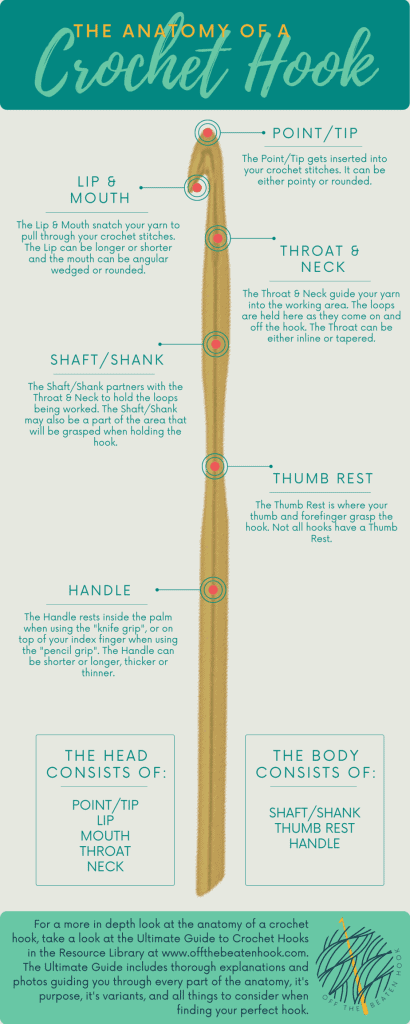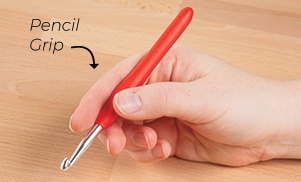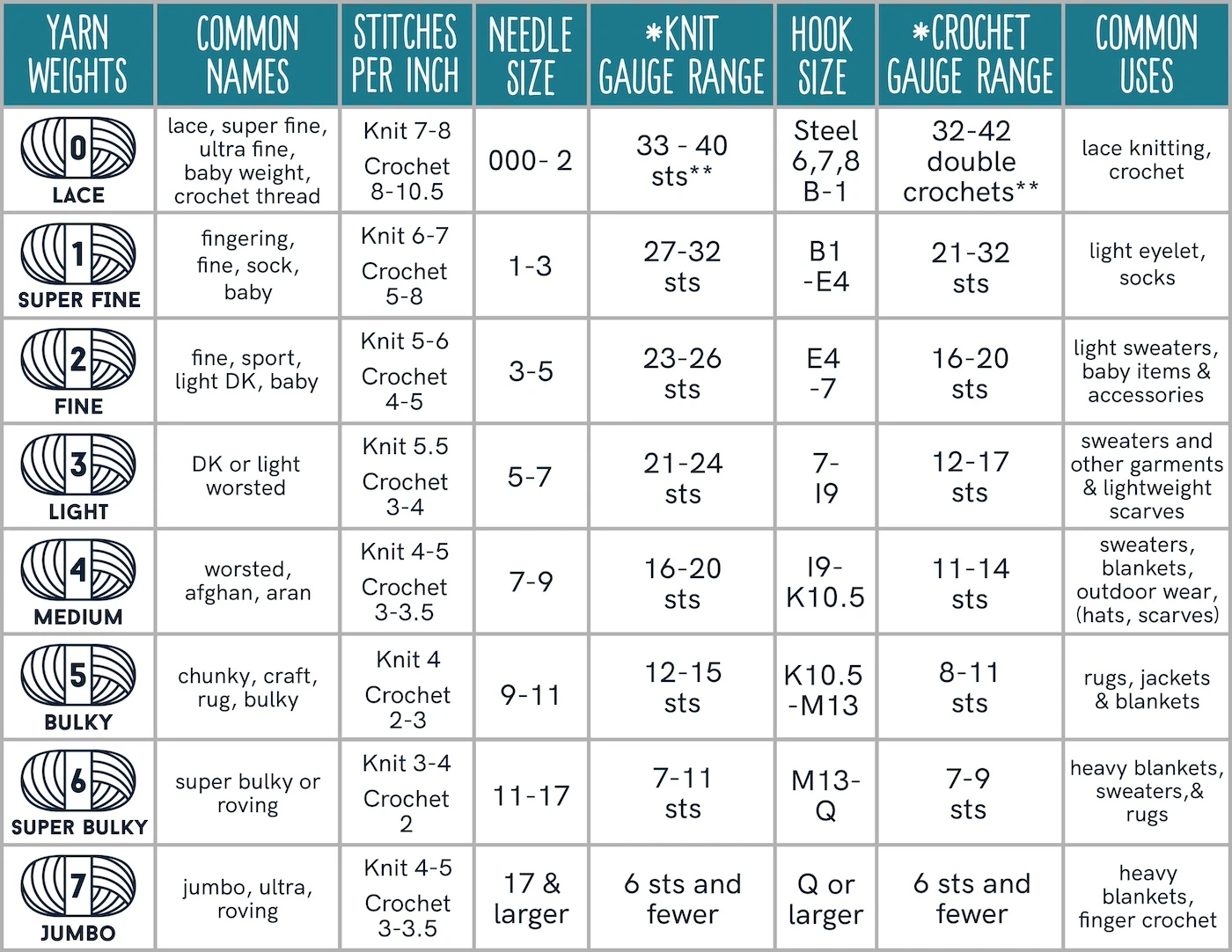
Point/Tip:
The tip of the hook is also referred to as the point. This is the part that gets pushed through your crochet stitches. The tip can be pointier or rounder. Pointier tips are easier to push through stitches, but they can split your yarn if they are too sharp.
Lip & Mouth:
The lip is what snatches your yarn after you push your hook through a stitch and “yarn over”. The loop then gets kept in the mouth as you pull the hook back through the stitch. The shape of the lip affects the shape of the mouth. It can be either more angular or rounded.
Throat & Neck:
The throat & neck guide your yarn into the working area. The loops are held here as they come on and off the hook. Based on how many loops you have on the hook, they may gather down towards the shaft. The throat can be either inline or tapered.
Shaft:
The shaft of the hook is also referred to as the shank. It partners with the throat & neck to hold the loops being worked. Loops will slip up and down this area as you are working your project. The shaft plays the critical role of determining the size of your stitches and is what the size of a hook is based upon (4mm, 7mm, etc). Depending on how you hold the hook, and the length of the shaft, you may also be grasping this area off and on while working your project.
Thumb Rest:
The thumb rest is also referred to as the grip. Not all hooks have a notable thumb rest. If there is one, it is designed to be a comfortable and obvious place where you hold the hook between your thumb and index or middle finger. The thumb rest may be a flatted area of the hook or made obvious by some type of padding like silicone, rubber or foam pad. If a hook is considered ergonomic, it is because of a specialty thumb rest and handle.
Handle:
The handle is the single largest and longest part of the hook. This is the part you hold. It rests inside your palm if you use the knife grip. It will rest on top of your forefinger if you use the pencil grip. The handle and the thumb rest are what determines if a hook is ergonomic. It provides stability as you work your project. The handle can be shorter, longer, thicker, thinner, plain or decorative.
How Do I Hold My Crochet Hook?
There are many different ways to hold your crochet hook. The way YOU choose will depend on the type of crochet project you’re working on as well as what’s comfortable for you. Most people choose from two main grips:
1. The Pencil Grip - Your hook is held like a pencil, with a three-fingered pinch. (shown in the image below)

2. The Knife Grip - Your hook is held like a steak knife, with your last three fingers controlling the motion of the hook. (shown in the image below)

Here are some other common ways to hold crochet hooks.
Crochet Hook Sizes
Crochet hooks are measured in millimeters (mm), but also have a corresponding letter from the alphabet and/or number (US size), though these can vary depending on the manufacturer. Different hook sizes can be chosen for different purposes. Each yarn label usually has a recommendation for what hook size to use with that particular yarn. Use the hook size recommendation as a jumping-off point to help you figure out which hook to use, but do pay attention to the gauge swatch recommendation if you are making a crochet pattern that needs to fit a particular way.
Need more information on hooks? Please visit the Craft Yarn Council.













